Link building is an essential part of any website’s search engine optimization, but, arguably, no other type of business benefits more from a strong backlink profile than a Software-as-a-Service one, or SaaS for short.
In this article, we will be looking at:
- What is link building for SaaS
- What makes link building such a big part of a SaaS SEO strategy
- The challenges that accompany running SaaS link building campaigns
- How to build links for your own SaaS business.
Without any further hesitation, let’s get straight into it.
Link building cheat sheet
What is Link Building for SaaS?
As the name suggests, SaaS link building is the process of acquiring high-quality backlinks to your SaaS website.
This is done with the goal of generating traffic, and increasing your website’s rankings in organic search results.
Link-building campaigns are typically carried out through cold email outreach campaigns, but there are other ways to generate quality backlinks as well, such as participating in webinars, or syndicating your content on other channels.
Why is Link Building Important for SaaS Businesses?
SEO as a whole is exceptionally important for Software-as-a-Service companies.
Regardless of the exact niche you’re, the SaaS landscape is exceptionally competitive, and can change seemingly overnight.
SaaS startups are one of the most common businesses popping up on the Internet because it’s a relatively straightforward process – you register your company, then outsource the development process of your software to a country in Eastern Europe or Asia to save money, and once it’s ready, start selling your product worldwide, usually on a subscription basis.
The formula is very profitable, as long as your product actually helps someone with any of their creative or technical workflows.
And there are so many different aspects of doing literally anything on your computer that there’s no shortage of software ideas – from accounting to digital marketing and digital PR asset design to, you guessed it, sending emails to build backlinks.
In fact, Microsoft Office, and Adobe Photoshop (or any other Adobe software, for that matter) – two names that you have undoubtedly heard of, are, in fact, SaaS businesses.
You probably have Microsoft Word and Excel on your computer right now.
However, there are also countless different choices when it comes to both text and photo editing.
So, how do you make yourself stand out from the crowd? After all, you’re not Microsoft, so you don’t get a free pass to the top of search results.
Of course, through search engine optimization.
However, depending on your niche, it can still be extremely hard to outrank your competition, even if your product and SEO content are on par.
On-page and technical SEO can help bring you to a tie with your competitors.
But if you’re really looking to step on the gas, a stronger backlink profile can just be the deciding factor between outranking and being outranked.
Does Link Building Still Work in 2024?
Naturally, you will ask: “What about the countless algorithm updates that only seem to reduce the impact of link building on rankings?”.
And that’s a smart question to ask.
In 2024, there seems to be a divide between those businesses who swear by white label link building and those who claim it to be a waste of time.
And that is because it can be both of these things at once.
You see, algorithm updates such as Panda were introduced by Google to reduce link “spam” and to combat link schemes.
This includes excessive reciprocal linking, paid links, bookmarking sites, and lots of other link building techniques that were rampant during the pre-panda days.
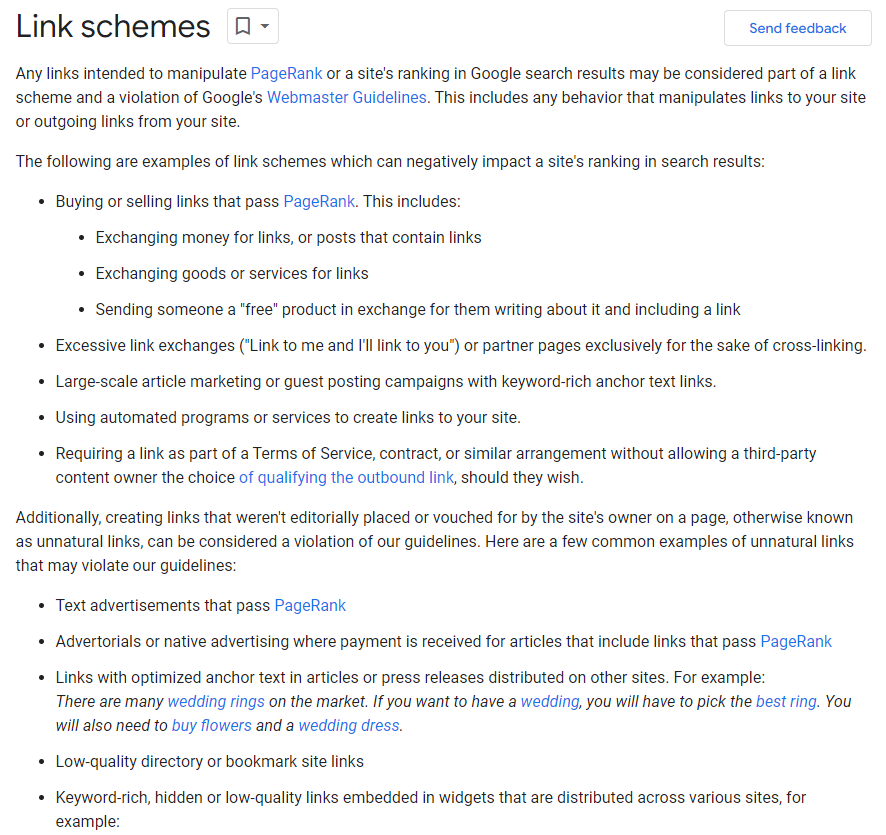
Utilization of these practices resulted in content that doesn’t really have any actual value showing up high in search results, in place of actually good content that deserves those spots.
However, these algorithm updates do not make high-quality links from relevant, authoritative resources any less powerful.
If anything, they have only reinforced the importance of quality link building as opposed to blatant link spam.
In 2024, if you try any of the link-building techniques that are deemed to be “link schemes” by Google, such links will be picked up by the algorithm almost immediately, and completely de-valued.
This means they will not contribute to your search engine ranking at all.
If you don’t do it excessively, they won’t harm your website either, though.
However, if Google notices unusual patterns around your website’s link profile, you might become subject to a manual review by Google staff.
So, what is the “good” way to build links? We will take a look at three exact strategies further down in the article, but according to Google’s very own John Mueller, it’s perfectly fine to create high-quality content, and then promote it to other websites through email (although without offering anything in return).
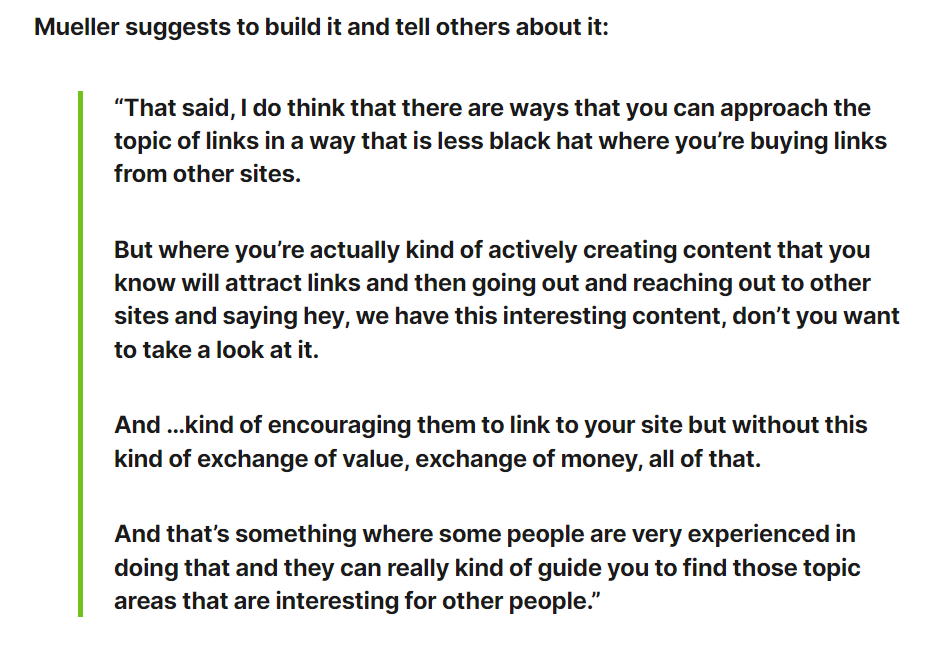
Link Attributes
If you’re going to be building links to your website, you need to be aware of the different attributes a link can have, as they can drastically alter the way a link passes on PageRank, of “link juice”.
PageRank is the core of Google’s algorithm and is still being used, all these years after its inception.
Although the PageRank algorithm is heavily modified in 2024 and its exact calculation method is not publicly available, its basic functionality is well-known.
A page’s PageRank is high if it has a lot of links pointing to it from other pages with a high PageRank.
In essence, the more links from relevant, highly-authoritative websites you have, the higher you will rank on search engine results pages.
Not all links are created equal.
We will take a more in-depth look at what makes a backlink “good” further below, but first, let’s get back to link attributes.
Link attributes, also commonly referred to as “rel” tags are little pieces of code that come right before the target URL of the link.
You can view them by right-clicking on the page with the link, pressing “Inspect”, and then “Console”, and searching for your link with ctrl-f.
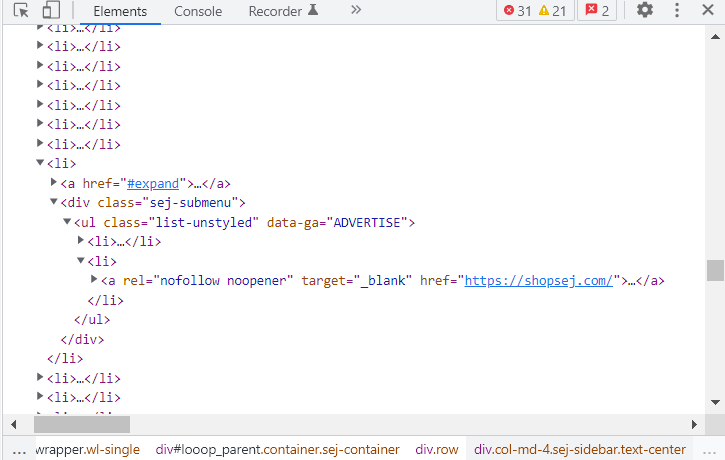
There are many “rel” tags that exist, but we’ll only be taking a look at the four most important ones for link building, as they affect how much (or little) PageRank a link is able to pass on.
Dofollow
The “rel=dofollow”, or “rel=follow” attribute is the most thought-after type of link for SEO purposes.
A link that does not have either of the four described attributes is also considered “dofollow”.
When a link has this tag, it allows the search engine to “follow” this link, enabling it to crawl and index the target URL.
This also lets the link pass PageRank, or “link juice”.
The links with any of the other three tags pass on less PageRank or none at all – so you can see why dofollow links are much more popular among link builders.
Nofollow
Dofollow’s polar opposite, the “rel=nofollow” link attribute prohibits search engines from following any link that has it, preventing it from crawling and indexing the link’s target URL.
This means that nofollow links also don’t pass on PageRank, making them undesirable for link building purposes.
However, that doesn’t mean that nofollow links are completely useless.
In fact, a high quality backlink profile consists of a good mix of dofollow and nofollow links – although, most of your inbound links should be dofollow.
People can still click on nofollow links, so they are still good for spreading the word about your business – especially on high-authority websites that get a lot of traffic.
UGC
UGC stands for user-generated content.
According to Google’s guidelines, all links that are part of user-generated content should be labeled with this tag.
Such links may be in the comment section of your blog, for example.

UGC links are both crawled and indexed by search engines. However, when it comes to passing PageRank, user-generated links are not a reliable method.
Whether or not a UGC link passes on link juice (and how much) can vary on a case-by-case basis, but as a rule of thumb, it’s a good idea not to rely on them for your SaaS link building strategy.
Sponsored
As you already guessed, the “rel=sponsored” tag is created to mark down any links that were acquired as part of a paid promotion, or sponsorship.
Google requires all sponsored links to be marked as such, otherwise, you may face a penalty.

Just like UGC, sponsored links are crawled and indexed by search engines – however, they don’t usually pass on any PageRank as part of an effort to combat paid links as an SEO strategy.
Keep in mind that a link can have multiple rel values at once, for example: “rel=”ugc,nofollow””.
What Makes A Link “Good”?
We have mentioned that not all backlinks are equally valuable.
So, besides being dofollow, what are the other factors that influence a link’s SEO value?
Topical relevance
This one is pretty straightforward.
First things first, the link needs to make sense for the user to click on.
For example, it’s perfectly fine for us to link to a full-on guide on link relevance from this section of the article.
However, a link to a guide on different viscosity engine oils would be obviously out of place.
Our blog is about link building and email outreach, and so our audience is probably not interested in anything car-related when they come to our site.
This doesn’t only apply to users.
In fact, Google’s algorithm can determine whether a link is topically relevant or not pretty easily.
So, any links coming to your pages from irrelevant websites will be completely de-valued, and not improve your rankings at all.
Authority
There are different types of authority, but we’ll talk about two: Page and Domain Authority.
Those are metrics developed by Moz to estimate how, well, authoritative any given website is by analyzing its backlink profile.
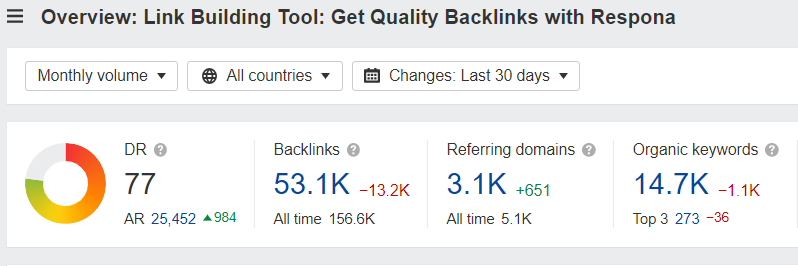
Domain Authority (DA) refers to the authority of the website as a whole, while Page Authority (PA) evaluates individual pages.
Naturally, links from high-authority sources are more valuable than ones from lower-quality websites.
Note: neither DA nor PA are official Google metrics, but there is a clear correlation between a high authority score and better rankings on search engine results pages.
Page traffic
Obviously, you want to get links from websites that get a lot of traffic.
However, one thing that link builders can sometimes forget is to look at the traffic of the individual prospect page.
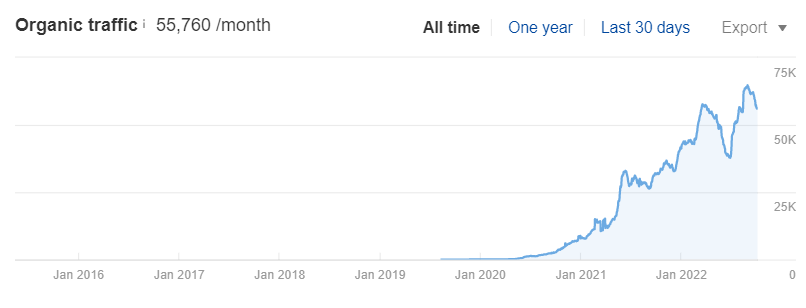
Even websites that receive hundreds of thousands of monthly visitors have pages that generate little to no traffic on their own.
Of course, in addition to passing on PageRank, the ideal backlinks will also direct valuable traffic your way, so keep that in mind when prospecting for links.
External and Internal Links
The number of other outgoing links on a page has a direct impact on the value of each individual link.
Essentially, the more outgoing links a page has, the less PageRank each one passes on.
However, that doesn’t affect the actual page’s total PageRank – just the amount that each individual link is able to pass on to another page.
So, your ideal link building prospect should only have a few outgoing links on their page.
Anchor text
Did you know that your backlinks’ anchor texts are actually a ranking factor in their own right?
The anchor text is the clickable text of a link.
Google uses your links’ anchor texts to better understand how other websites refer to you, and, as a result, what exactly your content is about.
If your page has a lot of links that contain a certain keyword in the anchor text, you may start ranking for that keyword, even if it’s not actually your target keyword for that page.
In general, it’s best to aim for exact and partial-match keywords when building links. This means your links’ anchor texts should contain your primary keyword or some variation of it.
In contrast, you should avoid generalized anchor texts, such as “learn more”, “this article”, and so on, as they provide zero context for search engines, even though surrounding content can make it seem like the link makes sense to you.
SaaS Link Building Challenges
Now, link building is known to be one of the most (if not the #1) time-consuming processes in the whole world of search engine optimization.
It doesn’t help that the SaaS industry is extremely saturated, and pretty much everyone and their grandmother is trying to secure high-quality backlinks to their site in an effort to gain the edge over their competitors.
So, before you can truly commit to link building, you need to be aware of the challenges that you will face along the way.
#1: Link building requires content
Link building can provide your business with immense benefits, that much is true.
However, you can’t build backlinks if you don’t have any content for them to point to.
Relevant, informative content should be the foundation of your search engine optimization strategy, even if you’re not planning to invest in building backlinks.
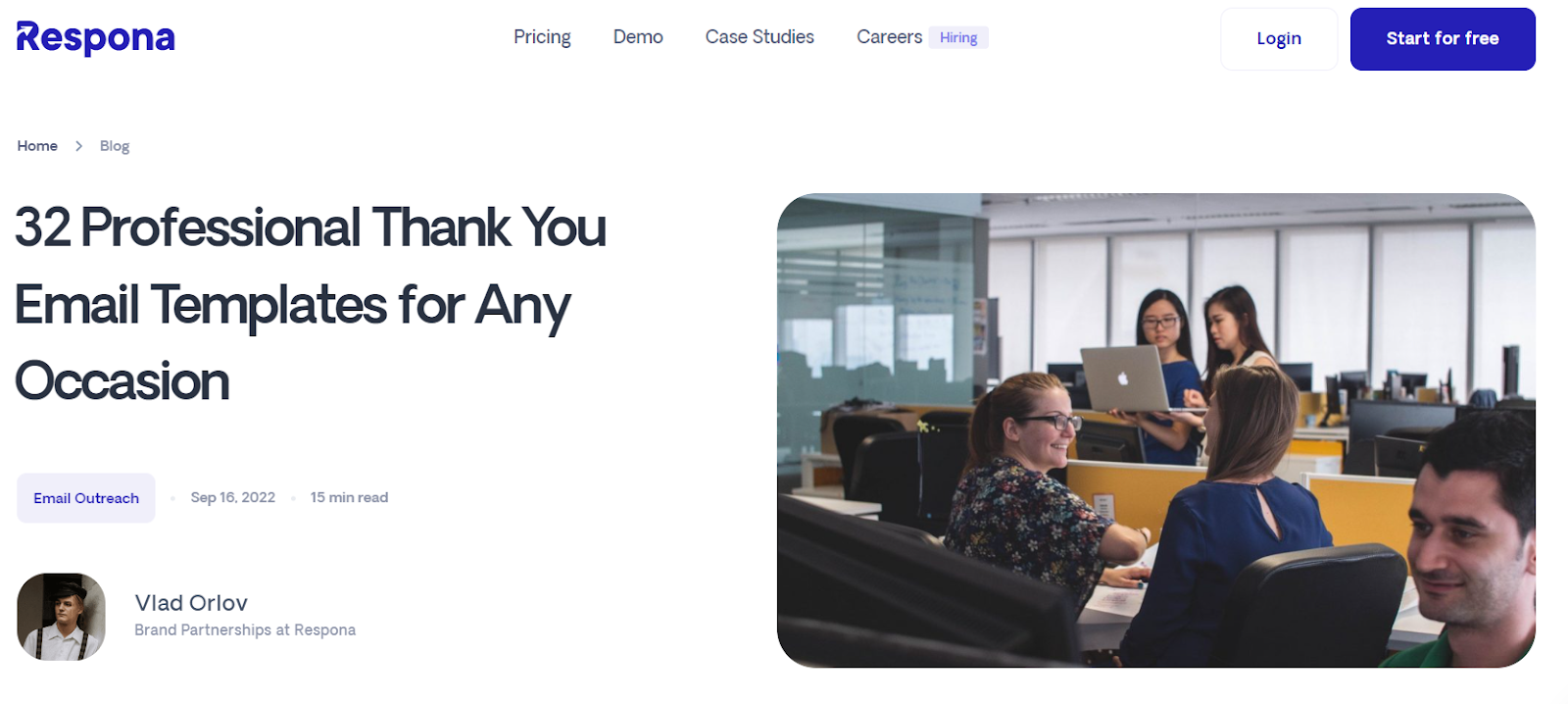
It’s already a necessity for ensuring online visibility of your website, and when link building is involved, it’s even more so.
So, in addition to spending the time and resources on preparing and launching your link building outreach campaigns, you need to ensure frequent, high-quality uploads on your blog.
#2: Depending on your niche, you may struggle with prospecting
The business landscape can vary greatly from niche to niche.
This applies to competition, revenue potential, and – you guessed it, link building.
Prospecting is the first stage of any link building campaign – it is the process of identifying opportunities (websites, specific articles) to get links.
Our niche (link building, SEO, email outreach) is rather vast – with no shortage of relevant website content to secure backlinks from.
It’s also very competitive – so it’s both a blessing and a curse.
Let’s take a look at a different example: Andcards.
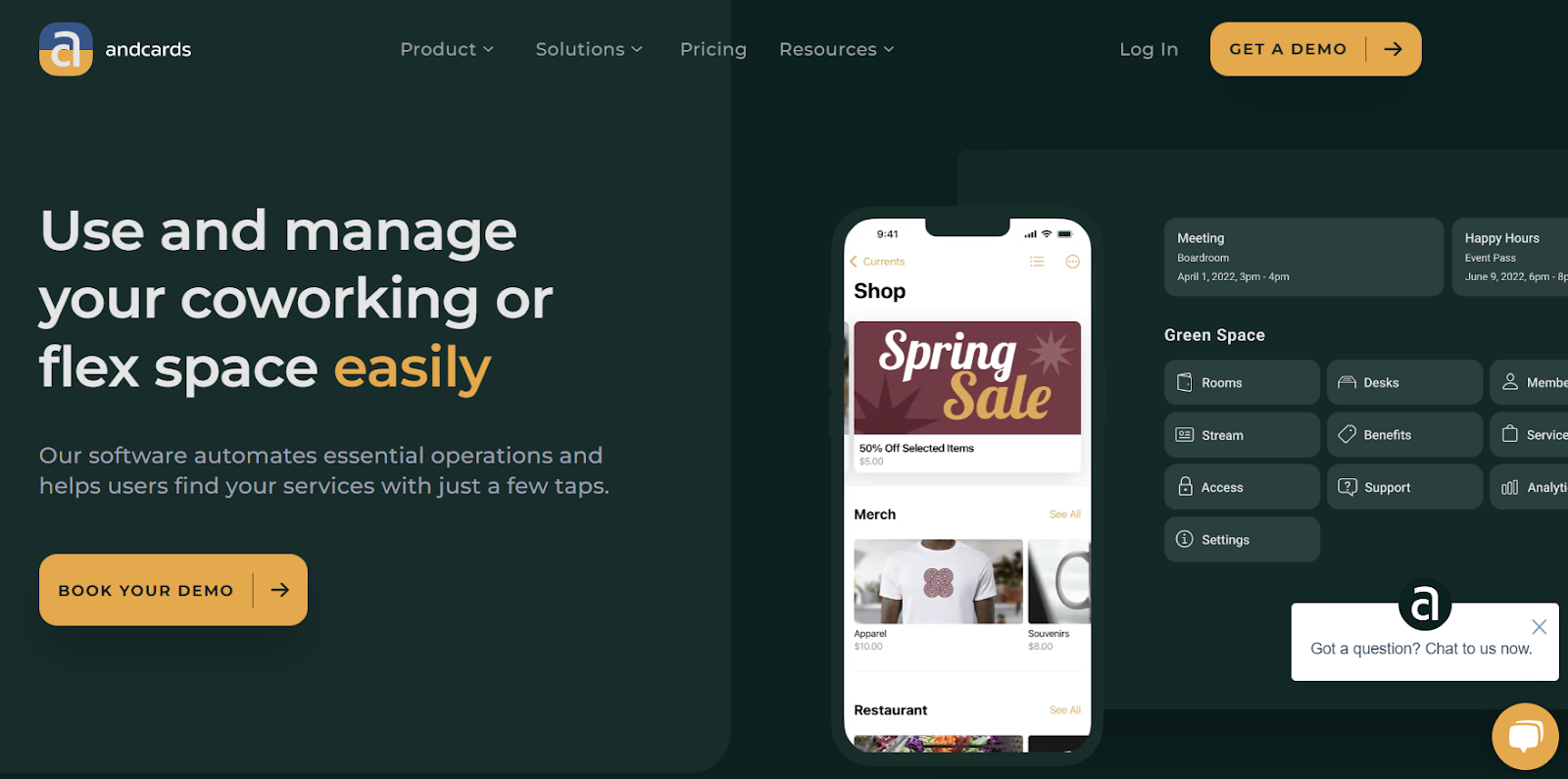
Andcards is another SaaS brand that occupies a very small niche: coworking space management software.
It is true that coworking offices have become more popular in recent years, but the market for such applications is still relatively small.
When it comes to relevant content that would make for high quality link building prospects for Andcards’ content, that pool is even smaller.
#3: Bloggers are tired of link pitches
Alright, let’s address the elephant in the room.
If you own a website that’s already gained some traction, you have probably received terrible link pitches.
If you have no such experience, allow us to demonstrate:
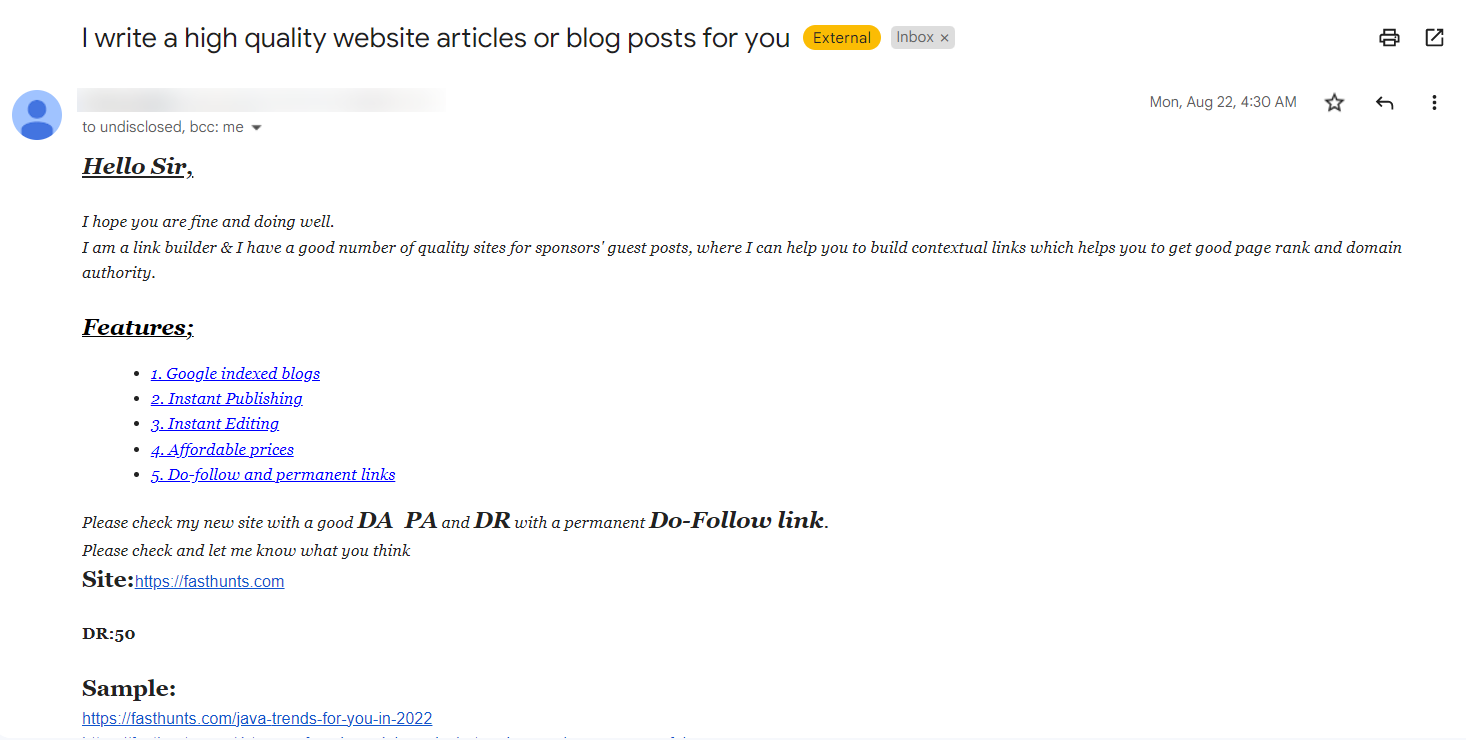
This is what most website owners imagine in their head when they hear the words “link pitch”.
“Hello, sir/madam/dear”, followed by broken English, and a bunch of highlighted buzzwords, such as “cheap”, “dofollow”, “high-DR”, and so on.
We don’t need to tell you that this is bad outreach. Also, in most such emails people are either asking for money or enquiring about how much it would cost to publish a guest post or host a link on your site, even if you don’t accept guest posts.
So, what makes for a good link building pitch instead?
Well, you need to sound like a human, and take the time to personalize each pitch for every single one of your prospects in your campaigns.
There are also other nuances deserving of a blog post of their own – feel free to refer to our link building outreach guide to learn more about writing good link pitches.
#4: It needs manpower
Running a link building campaign consists of four steps:
- Prospecting
- Preparing your outreach sequence
- Finding contact information
- Personalizing pitches
Respona was designed to automate and speed up each of these.
However, it still requires manual input to achieve your desired results.
With Respona, it will take you a few hours (4-6) to create and launch a small campaign of only 100 opportunities from start to finish.
Doing all of that manually can take you well over a dozen hours.
The average response rate for link building emails is only 10%. And only about half of those will be positive.
So, to achieve results, link building needs to be done at scale, which, of course, takes a lot of time.
Ideally, you should have at least one person doing it full-time to secure a constant flow of SaaS backlinks.
On average, one person can reasonably build 10 backlinks a week.
Or, if you have the budget, you may choose to hire a link building agency to outsource the whole process.
#5: It can take a long time to see actual results
Finally, besides just taking a long time to actually prepare and launch your link building campaigns, the actual SEO benefits don’t usually become apparent until at least after a few months of consistently building high-quality links.
Depending on your niche, the exact amount of time until you see real results will vary, but it’s unrealistic to expect top 3 rankings after a week of link building.
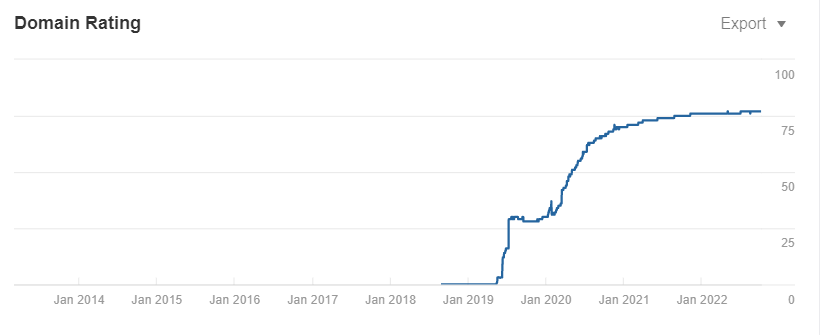
So, building links is a long-term commitment to your SEO strategy, and you should be ready to pour a lot of time and effort into link building until you start to see real results.
However, once those links do kick in, it will be hard for your competitors to outrank you in SERPs until they build a comparable amount of quality backlinks.
How to Build Links for SaaS?
There are many different link building strategies that you may choose to use.
In this section, we will only describe the prospecting and contact confirmation stages of three of the most popular and effective link building strategies.
As for the sequence preparation and personalization stages, feel free to refer to our link building outreach guide as it goes much more in-depth, and even includes templates.
Strategy #1: Link Insertion
If you’re just getting started with link building, the link insertion strategy is arguably the best strategy to familiarize yourself with the whole process.
It involves finding relevant, non-competing, high quality content that mentions your target keyword somewhere in the text.
First, you will need to choose your link building target.
Let’s take our recent post as an example, targeting the “content distribution” keyword:
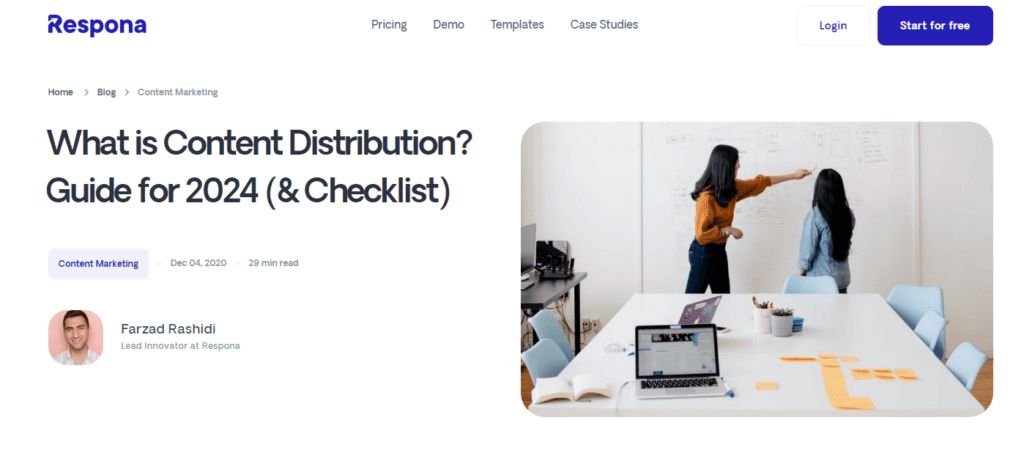
Then, we will be looking for articles that mention our keyword but aren’t directly competing.
Like this one:
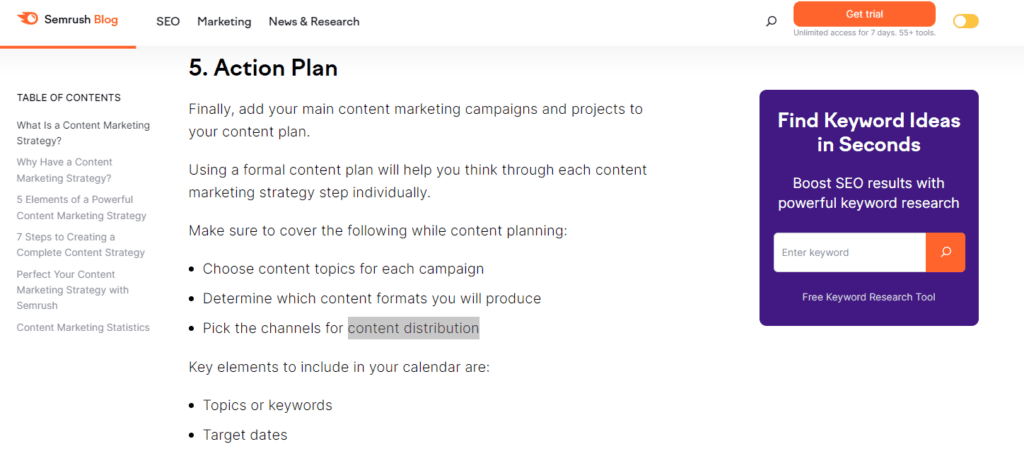
For this – and every other strategy in this article, we’ll be using our own tool, Respona.
It automates every aspect of link building outreach – from prospecting to finding contact information and even personalization.
It even comes with streamlined campaign templates for virtually every purpose.
Let’s start with the link insertion (anchor text) campaign template.
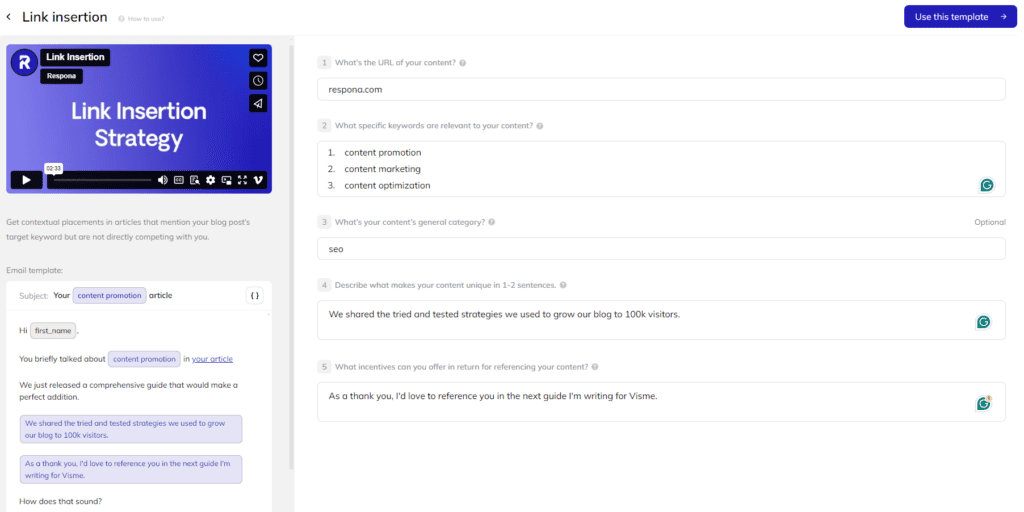
To use it, you just need to fill out a few simple fields.
In the first one, paste a link to the piece of content you’d like to promote. It (along with the third, fourth, and fifth fields) will be pulled into your email sequence.
In the second field, paste some keywords that are relevant to your content. They will be used to set up your search, so keep them targeted but broad enough to get as many results as possible.
The more keywords you use, the more results Respona will pull.
In the third field, mention the general category your article belongs to. For us, it’s “SEO”, for example.
In the last two fields, briefly describe what makes your content unique, and provide an incentive for your prospect to reference your content (such as an indirect link back).
When all fields are filled out, click “Use this template” to get into the campaign template.
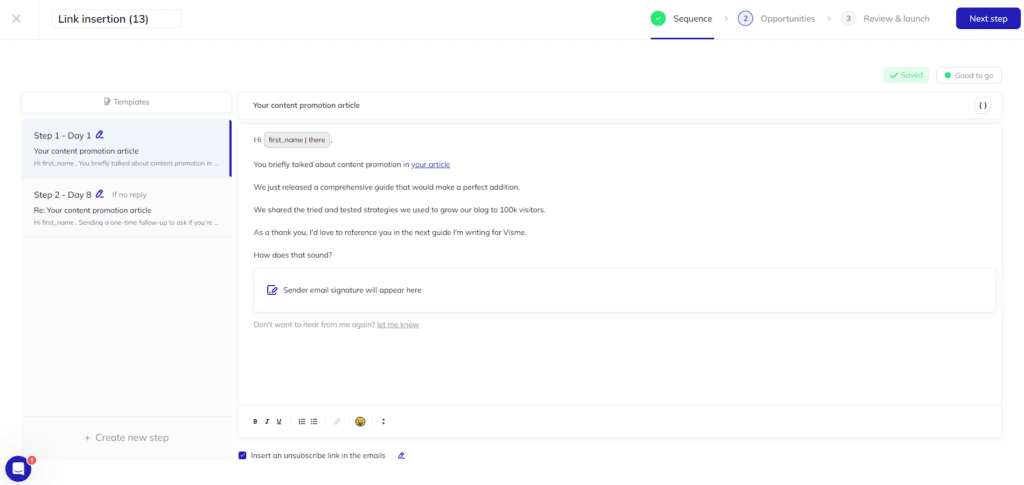
The first step of any campaign in Respona is to review or create your email sequence from the ground up.
Each campaign template comes with its own email template, but we recommend finding a template that works specifically for you.
Our email builders offers an extensive set of tools for this, including a reply chance estimator & spam word checker:
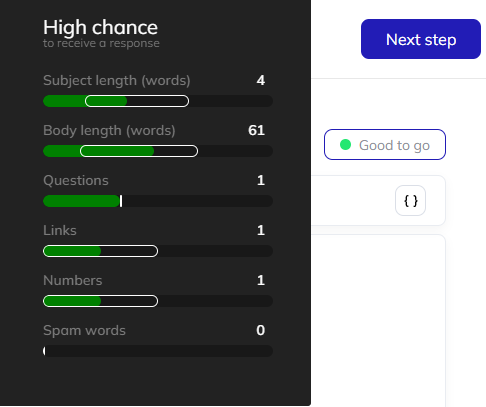
Automated follow-ups:
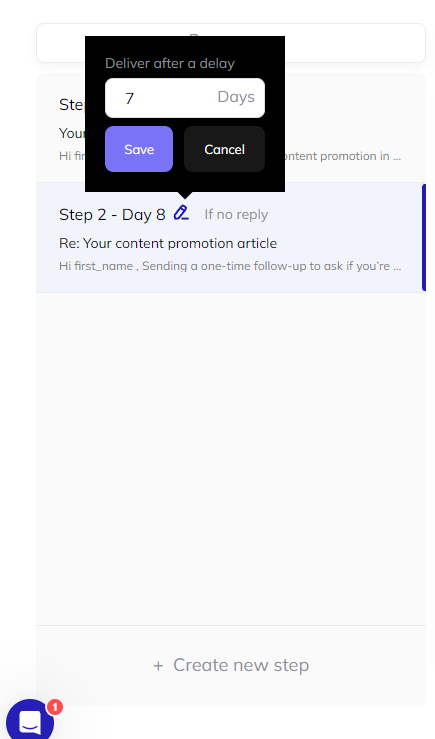
The option to add an unsubscribe link:
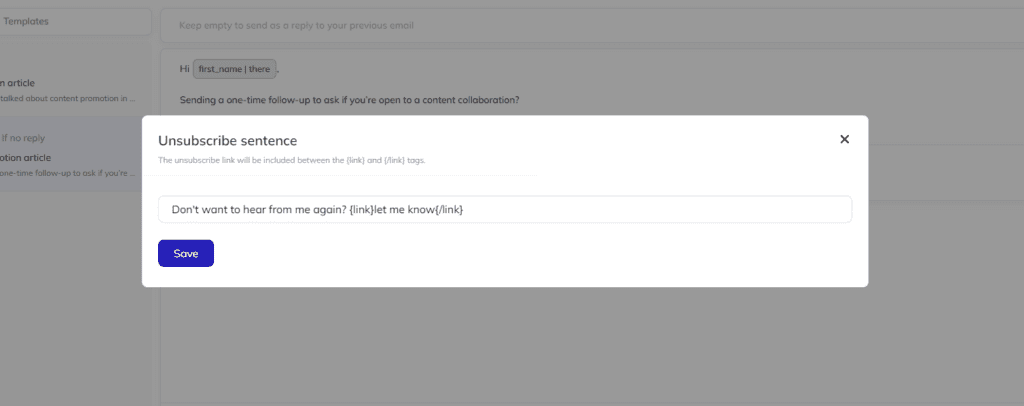
As well as a set of variables, both regular and AI-powered.
Regular variables like [first_name] and [website_url] will be populated based on information provided in your prospects’ content, email address, or contact information.
AI variables, on the other hand, will “read” your prospects’ articles and generate unique personalizations for each opportunity in your campaign.
You can also create your own, custom variables – including AI ones.

The sequence creation process is exactly the same for each campaign, so well only cover it once in this article.
When your email sequence is good to go, press “Next Step” to get into Respona’s search engine.
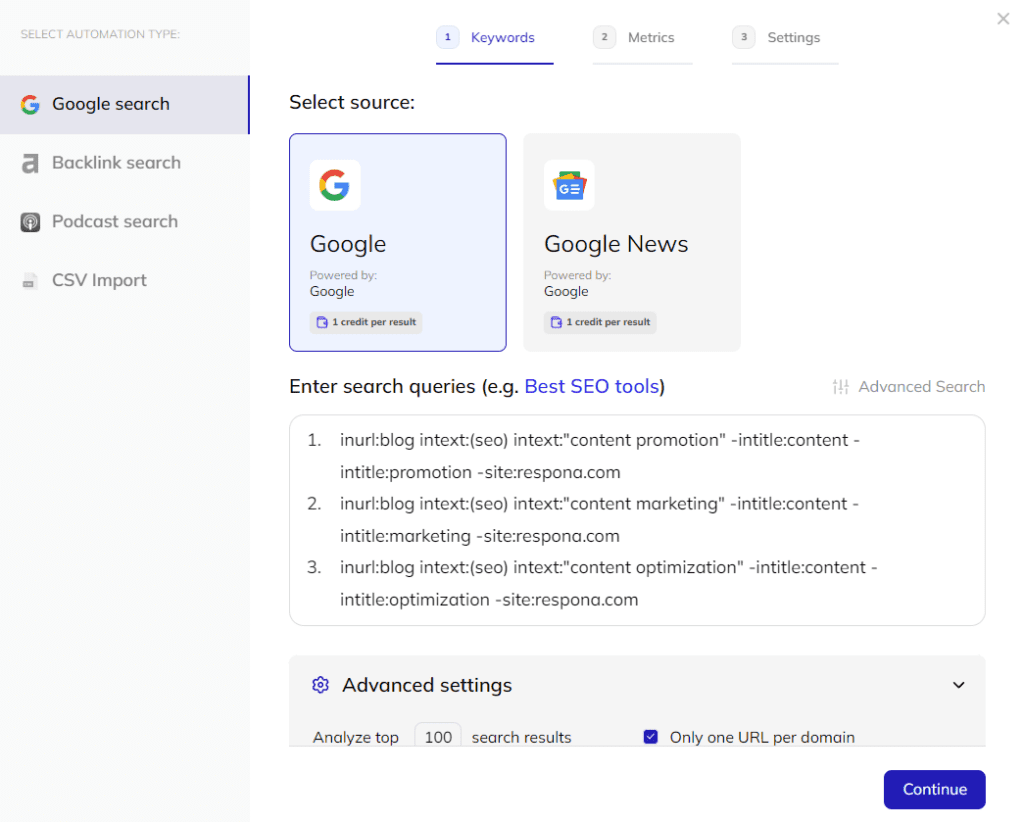
Because we used a campaign template, it’s already locked and loaded to find relevant opportunities.
It does so by applying advanced search operators, namely:
- inurl:blog
- intext:
- intitle:
These narrow down the search results to only blog posts that mention our target keywords in the content and make for good link insertion opportunities.
Click “Continue” and add some additional SEO filters to narrow them down even further.
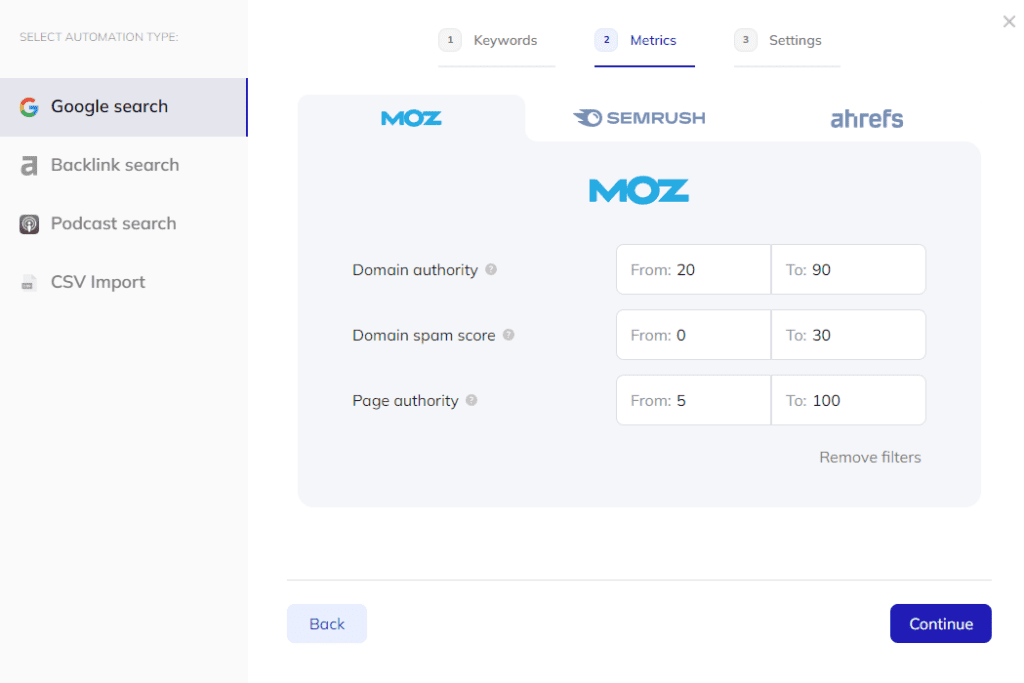
After you click “Continue” once more, you will be brought into the contact finder settings.
The process for setting it up is also the same for all campaigns in this article, so we’ll only cover it once – but in a separate section.
Running the contact search is integrated with the search for websites (they run at the same time) and is the same for every strategy – so we’ll also talk about it below, in the section about finding contacts.
Strategy #2: Competitor Backlinks (Skyscraper Technique)
The next strategy on our list is competitor backlinks.
It is another link building tactic that is very easy to execute, even for somebody who has never built links in the past.
The premise is simple: you find articles that compete with your own, extract their backlinks, and reach out to websites linking to your competitors, letting them know how much better your content is.
It’s our favorite link building strategy. What makes it so appealing is how easy it is to find prospects.
For example, just this one article competing with our content distribution guide has 937 backlinks from 197 unique domains.

This makes for almost 200 link building prospects – found in 10 seconds or so.
Normally, you would require backlink monitoring software (like SEMRush or Ahrefs) to carry out this strategy.
However, Respona is directly integrated with Moz from the get-go, allowing you to tap into your competitors’ backlinks, even if you do not have an account with any backlink monitoring tool.
It also has a dedicated campaign template for finding competitors’ backlinks.
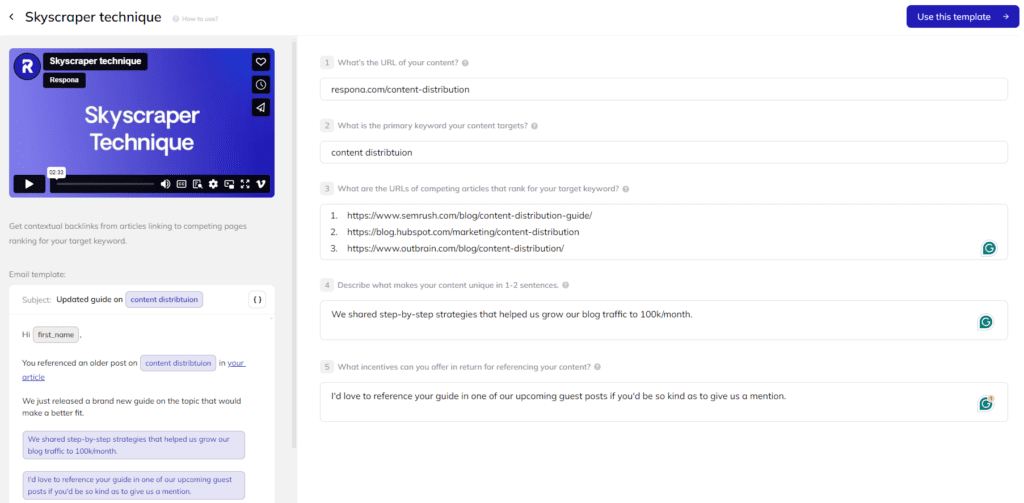
Using it is similar to the anchor text campaign template – but the fields to fill out are different.
In the first one, paste the link to the article you’d like to get links to.
Next, mention the primary keyword it targets.
In the third field, paste the links to your competitors’ articles on the same topic. You can paste as many as you need – Respona will pull their backlinks automatically.
In the last two fields, briefly explain what sets your content apart from the competition, and provide prospects with a brief incentive to collaborate.
When ready, click “Use this template” to get into the campaign editor. We’ll skip the sequence review step as we’ve covered it above.
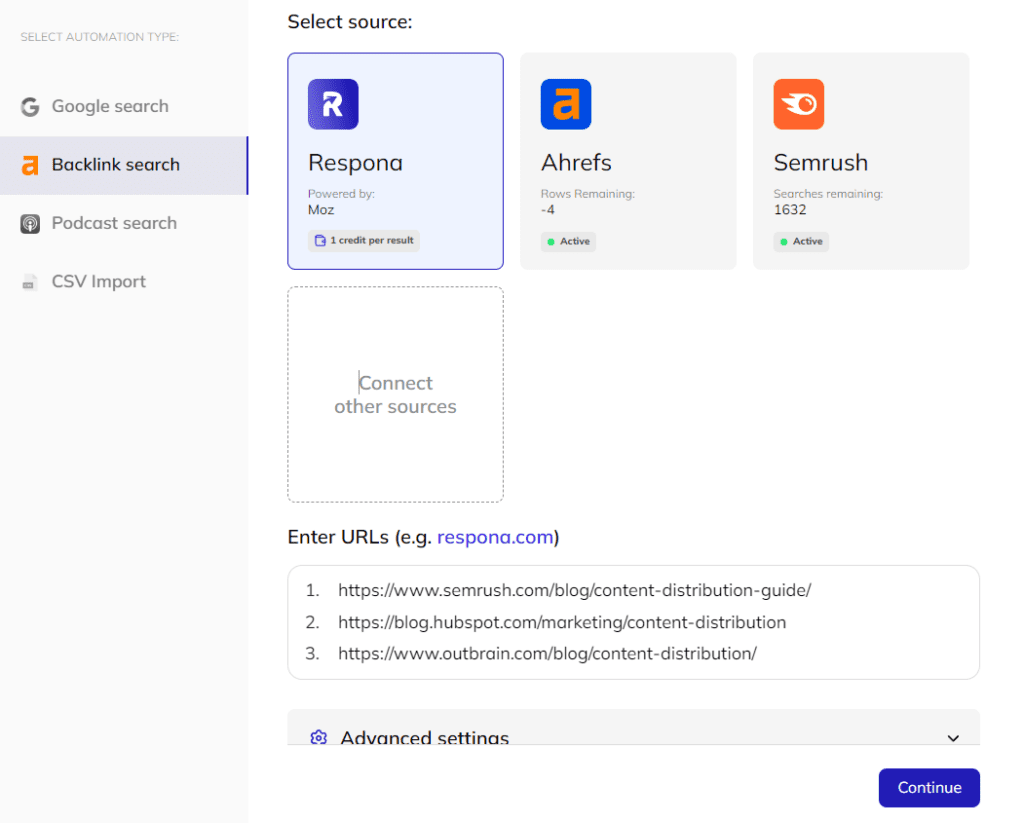
Respona is already primed to extract your competitors’ backlinks, and after launching the backlink and contact search automation (more on that later), they will be pulled straight into your outreach campaign:
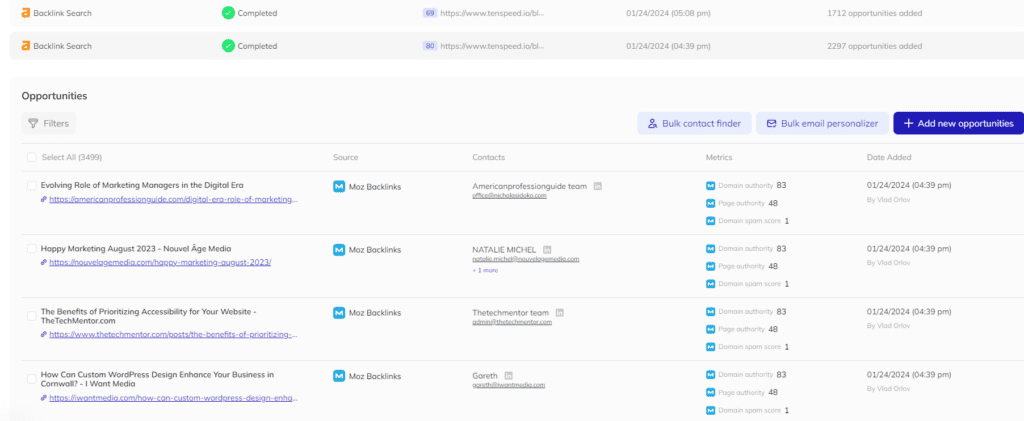
Strategy #3: Guest Posting
Our third favorite link building strategy is none other than guest posting.
Guest posting is one of the few link building strategies that have been around since the dawn of backlinking and is still going strong, being one of the most effective ways to get high-quality links to this day.
As the name suggests, guest posting refers to the process of writing and publishing a piece of content on another website, as a “guest”.
There are three ways to find guest posting opportunities.
The first one is the most straightforward one – which is just to reach out to websites that you like and ask whether they are open to a guest post.
The responses to this approach will be divided, but a lot of sites accept guest contributions, even if they do not have a “Write for Us” page.
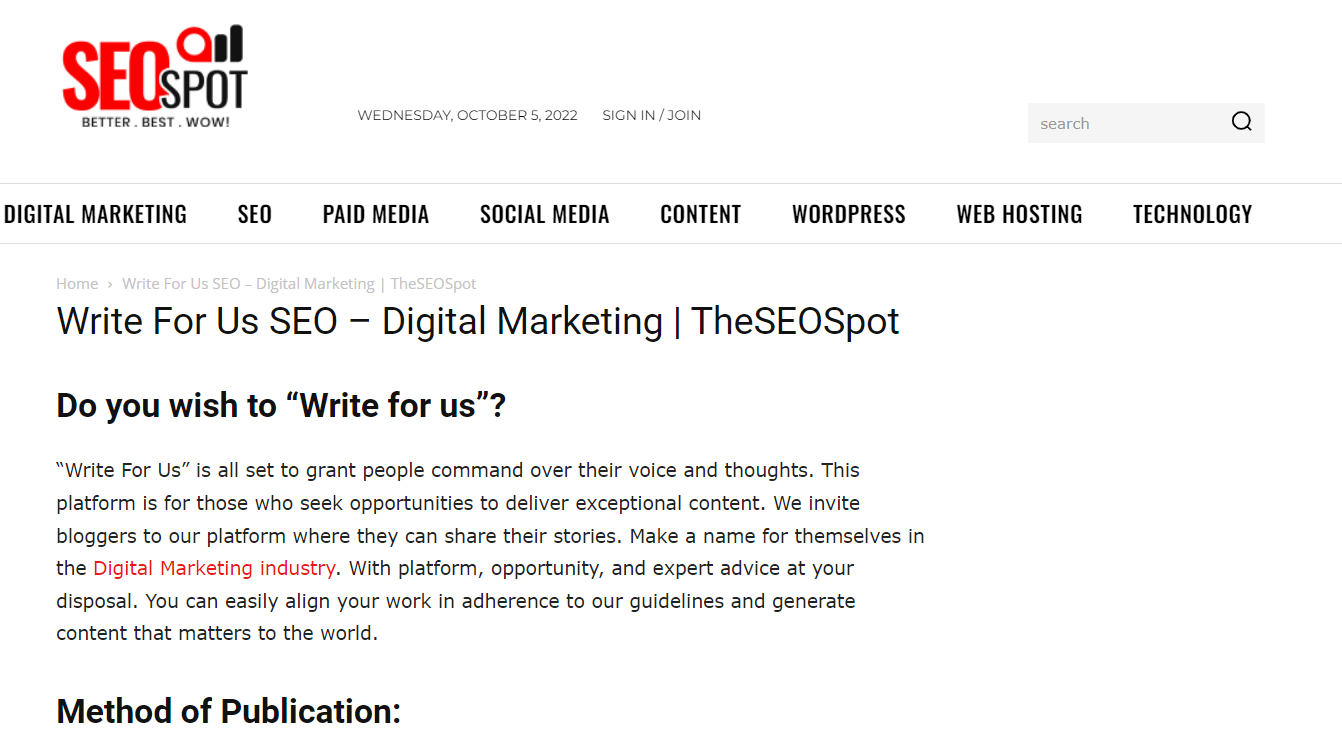
If you’re already doing link building outreach, there’s no real reason to run separate campaigns for guest posting.
A much more time-efficient way to secure guest post opportunities is to pitch your GP at the end of a successful link collaboration.
You shouldn’t just ask people “Hey, by the way, do you accept guest posts?”, though.
The trick with guest posting is to provide value for your prospect.
You can do that by identifying a gap in their keyword research strategy and coming up with a valuable content topic that helps them close that gap.
This way, you may be able to get a spot on a website that doesn’t typically accept guest posts.
There are several tools that can be used to find keyword gaps, but we use Ahrefs, so that’s what we’ll teach you to do here.
First, paste your prospects’ URL into Ahrefs’ Site Explorer in two tabs and switch back to the original Overview (not Overview 2.0).
In one of the tabs, click over to Organic Search.
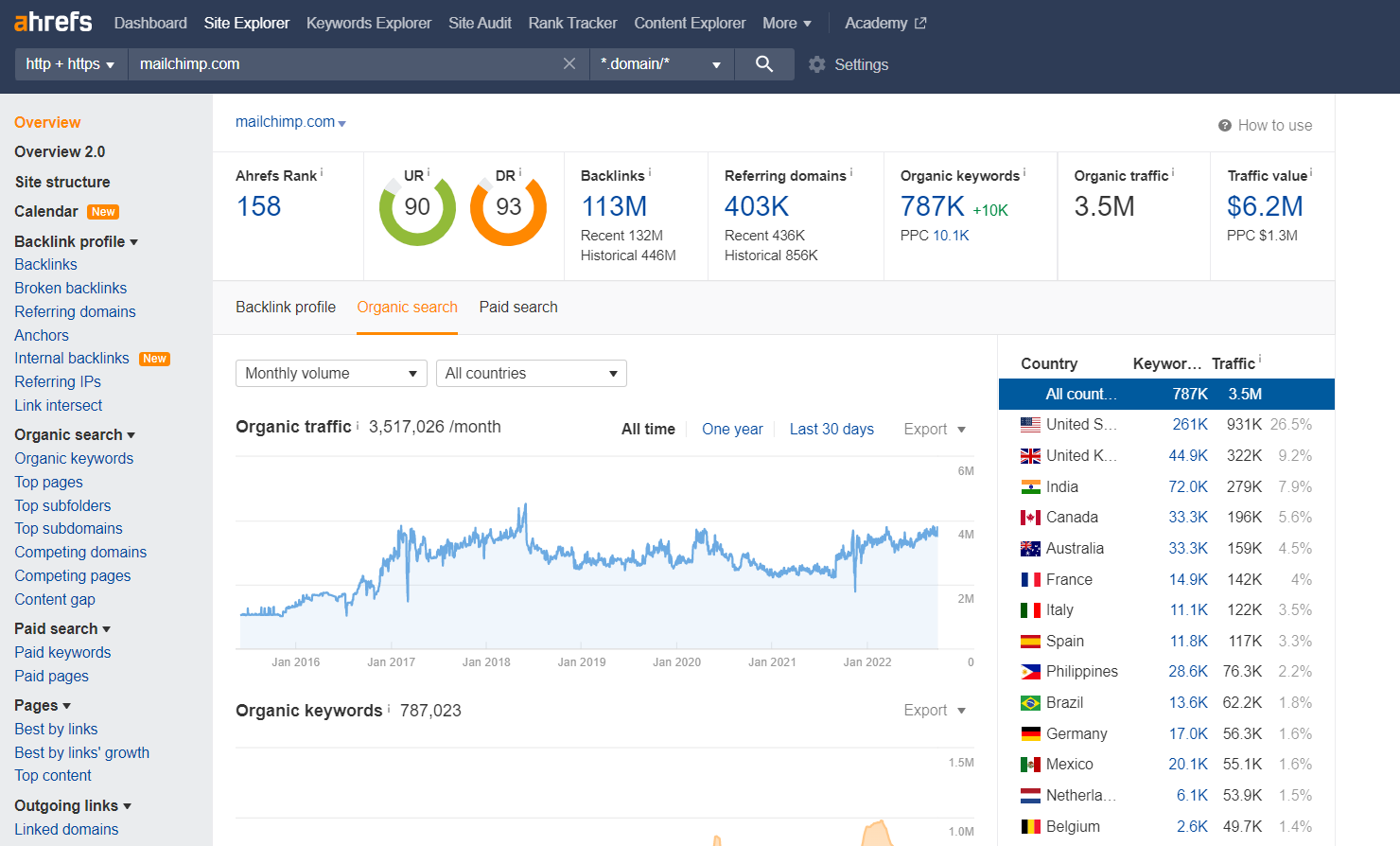
Then scroll down to the Top 10 Competitors section and choose two websites.
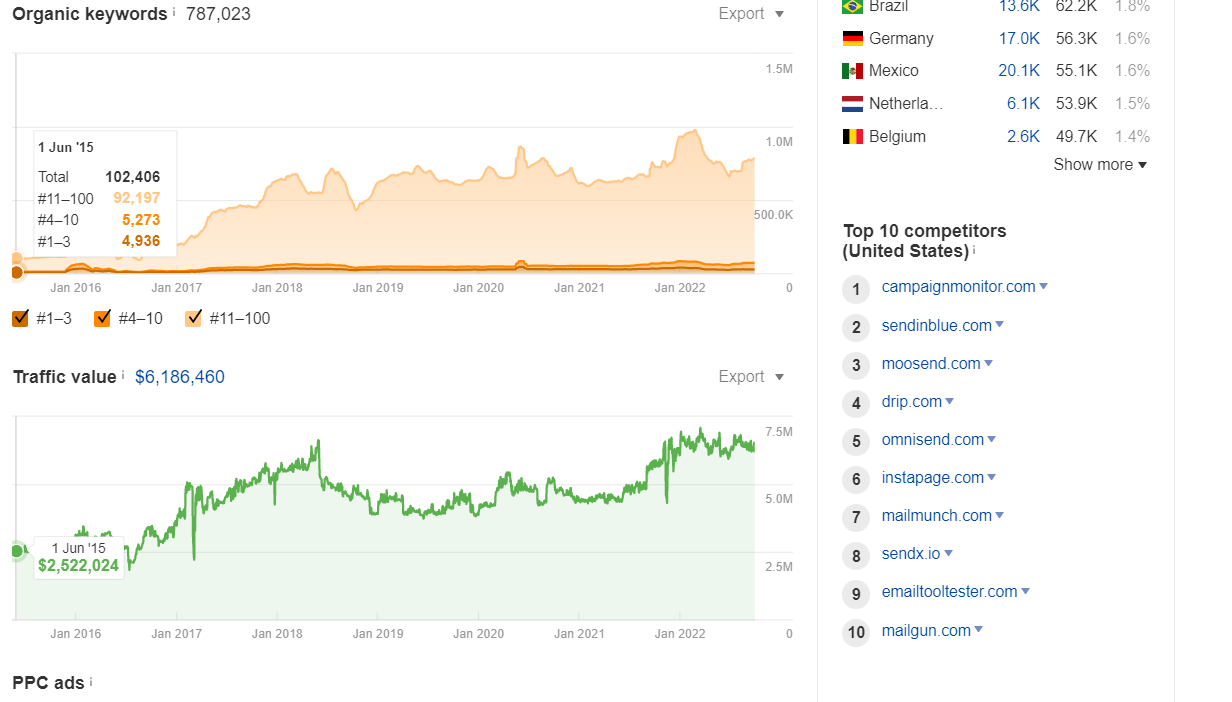
In the other tab, find the Content Gap section in the left sidebar and click on it.
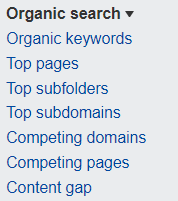
Paste two of your prospects’ competing URLs and click “Show Keywords”.
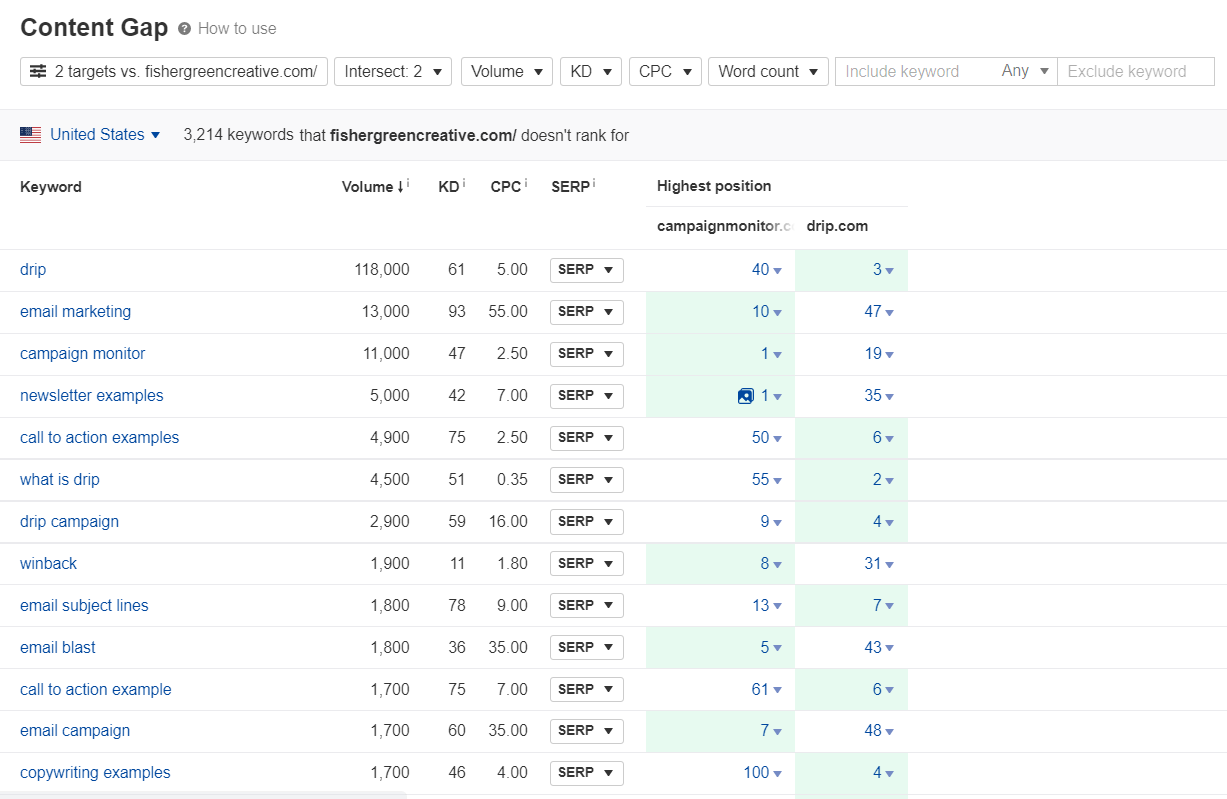
Make sure to enable the “Intersect: 2” filter.
Then, select a keyword, come up with a topic that covers that keyword, and pitch it to your prospect.
Make sure to also mention exactly how you found this keyword gap and include a screenshot from Ahrefs (or whichever tool you used) that showcases the gap.
This will make a great impression on your prospect and make it seem like you spent the time to research their website to come up with something valuable for them – which you did.
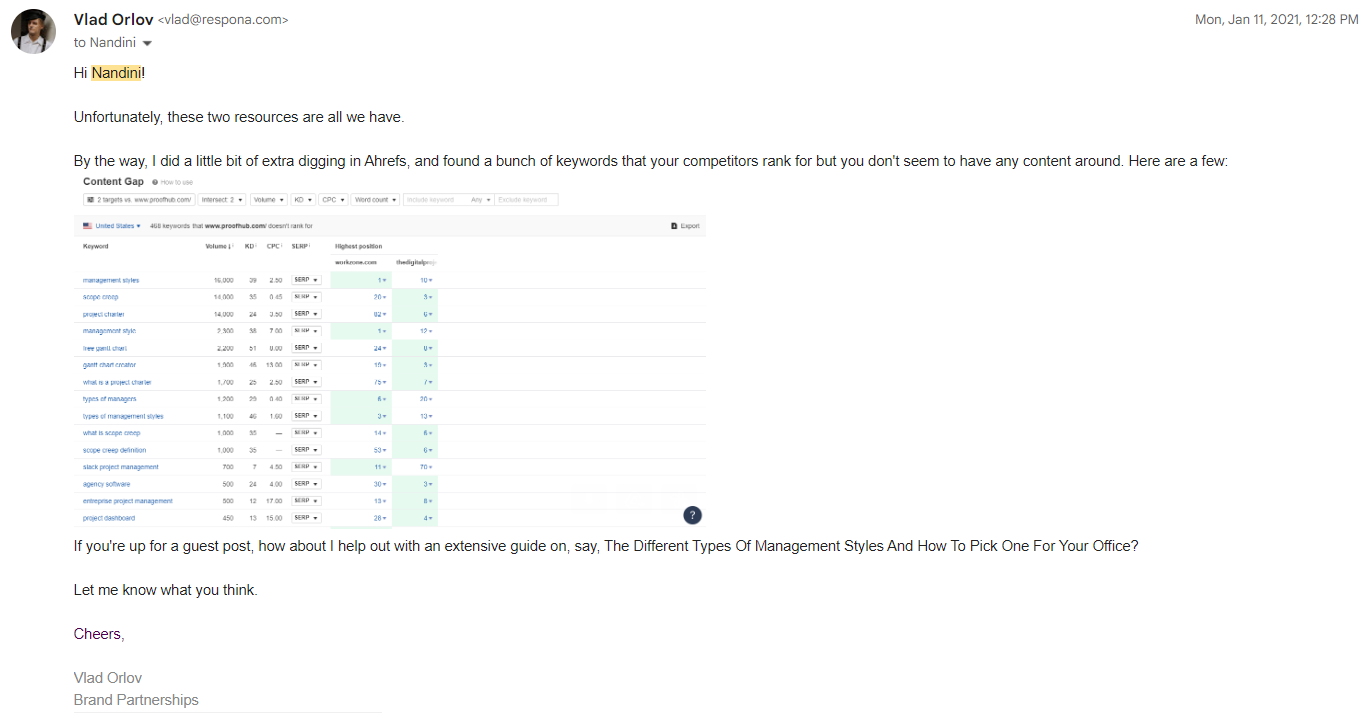
This approach is much more effective at securing guest posting opportunities than cold emailing since your prospect is already comfortable with collaborating with you, and you even went through all the effort to identify a hole in their keyword strategy.
The second approach is to reach out to sites that do have such a page.
On paper, it would seem like a more logical thing to do, since you already know the website accepts guest posts, so you won’t waste your time preparing a pitch for someone who won’t even consider it.
However, there are significant downsides to writing for websites that have a “Write for Us” page.
The first one is that most of the time, they will ask you to submit your request through a contact form on that page.
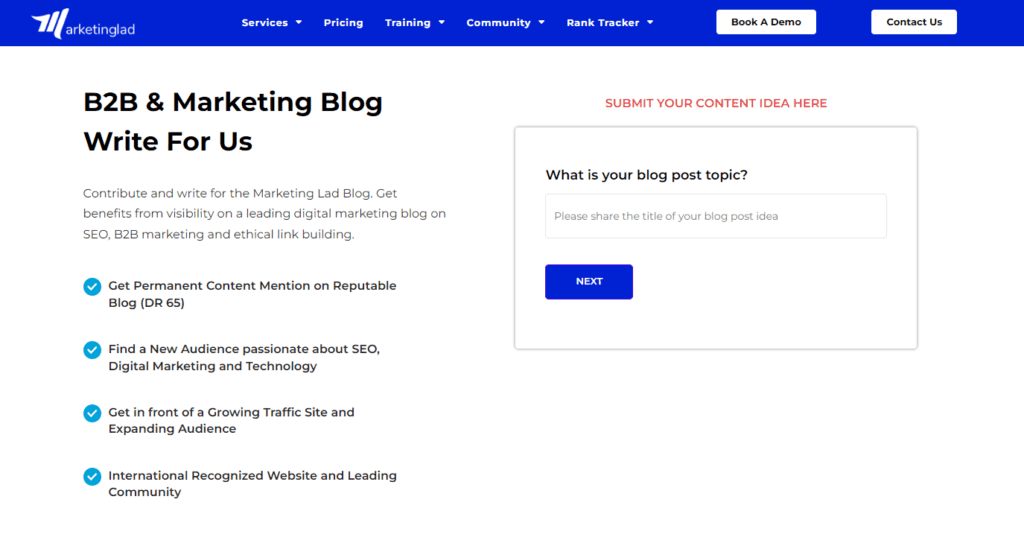
Contact forms aren’t necessarily the quickest medium for communication and it’s always best to talk to someone directly.
The second one is the fact that by openly advertising that a website accepts guest posts, it attracts dozens if not hundreds of link builders (depending on the popularity of the website).
So, it may take a long time for the team to even reply to your request, let alone approve the guest post topic, review the content, and publish.
The third disadvantage of “Write for Us” websites is that oftentimes, they ask for a “publishing fee” – which goes directly against Google’s guidelines.
And the final con of writing for such resources is that most likely, your guest post will be hosted alongside mediocre or just plainly bad content, which isn’t necessarily the best way to establish yourself as an authority or gain high-quality backlinks.
However, all of this doesn’t mean that there aren’t any good websites that openly accept guest posts – you just have to make sure to properly screen your prospects before reaching out.
Luckily, finding websites that have a “write for us” page is very easy.
Like with the other strategies discussed today, Respona comes with a built-in campaign template, just for finding guest posting opportunities.
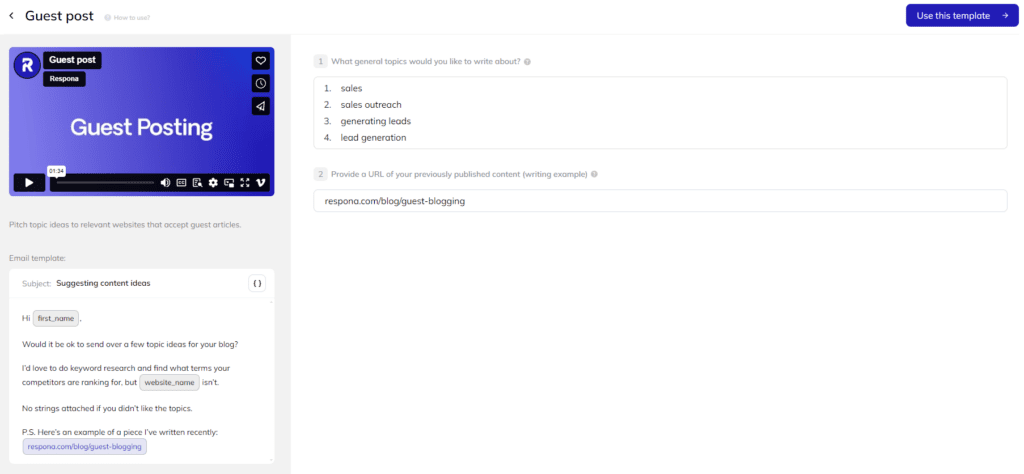
To use it, just fill out your target keywords and provide an example of your previous guest posts.
Respona will automatically apply the most common “Write for us” page title variations like “Contributor guidelines”, “submit an article”, etc., to find as many guest posting opportunities for you as possible.
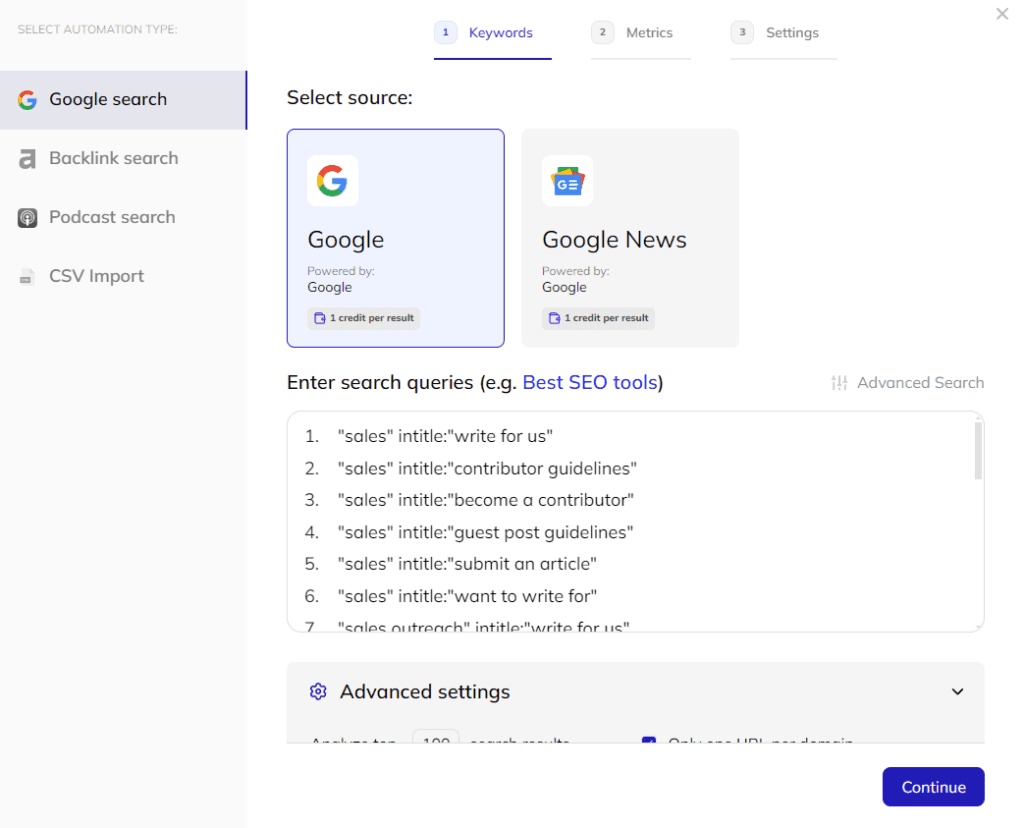
Finding Contact Information
Finding relevant websites to reach out to is only one part of the prospecting process.
The second one is finding the appropriate email address to actually message.
If you’ve ever run any manual outreach campaigns (not just link building), you already know just how tedious and time-consuming it can be.
So, one of Respona’s primary goals was to automate this process as much as possible.
Let’s take a closer look.
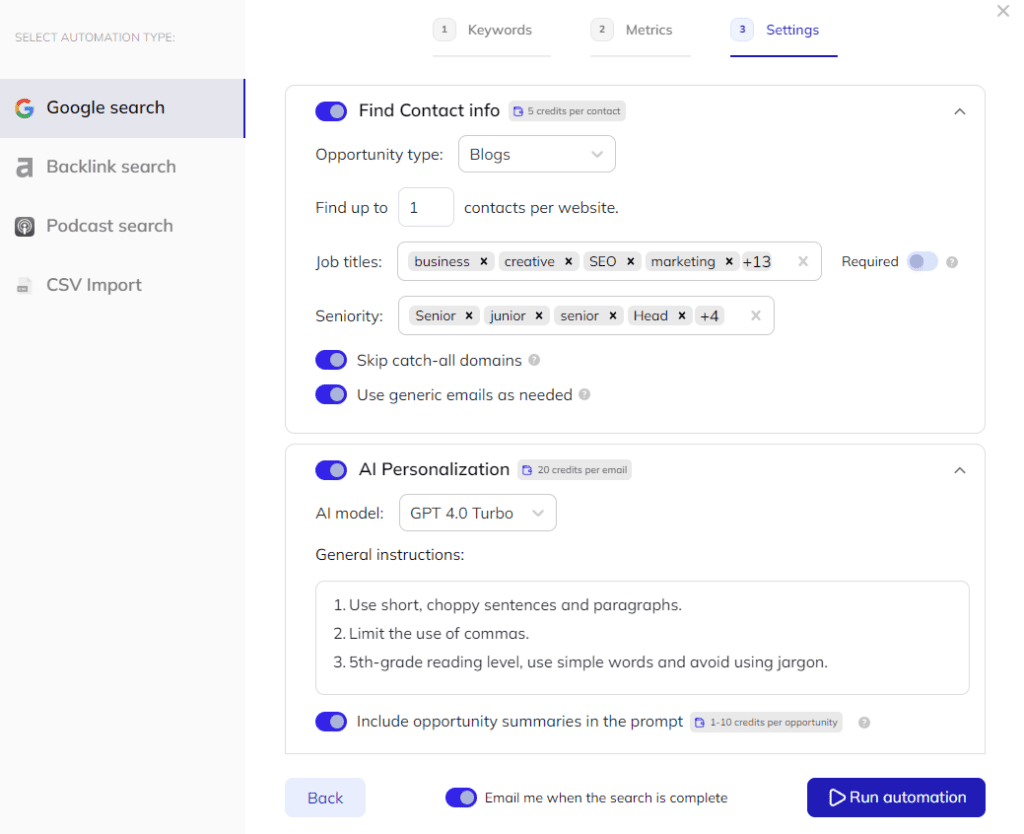
Our contact search algorithm consolidates information from 24 different data providers to maximize the chances of delivery.
If you use a campaign template, all of the settings will already be pre-set to find contacts relevant to what you’re doing.
For link building, these are your content and SEO managers, writers, creatives, etc.
However, you’re more than welcome to change the options for your campaigns.
You can specify exactly which employees should be assigned in the “position” and “seniority” fields of the automation setup.
We also recommend assigning 2 or more contacts per opportunity – this way, your chances of getting a response are higher.
There are also two advanced settings available:

The first one disables the tool to assign catch-all emails to opportunities -, we recommend keeping this on as using catch-all (not 100% verified) addresses may hurt your overall deliverability.
The second one works as a fail-safe in case the tool is unable to find an actual person’s email address associated with a specific domain. This is often the case with smaller websites that don’t have a lot of employees.
Besides the contact search settings, there are two more options on this screen:
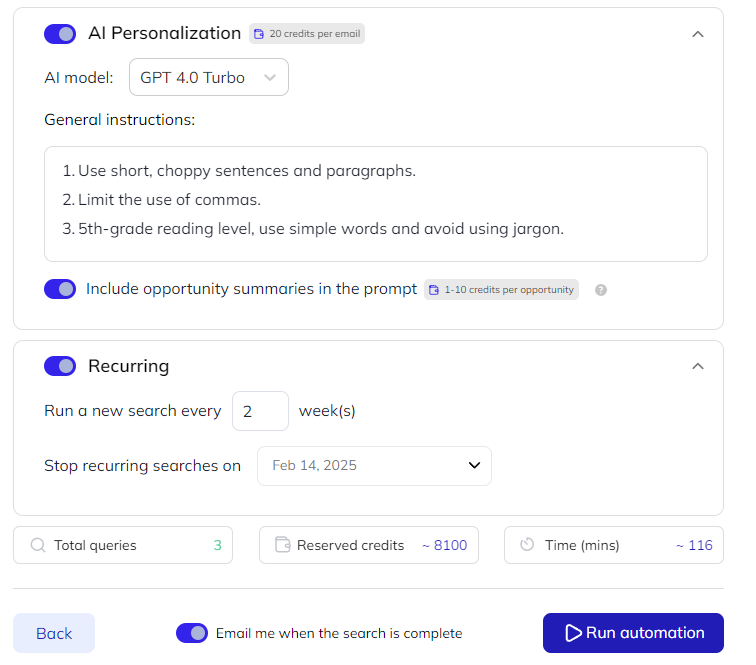
In the first one, you can provide your AI personalizations (if you used any) with additional guidelines such as tone of voice, examples, etc.
By toggling the final option, you may choose to make a campaign recurring – enabling Respona to re-run it on your selected time period and top up your campaign with fresh opportunities automatically.
Once you click “Run automation”, the tool will do its magic – and run three processes at the same time:
- Find relevant content (find blog posts for the anchor text strategy, extract valuable backlinks from competitors, or find “Write for us” pages – depends on the campaign you chose)
- Find contact information
- Make AI personalizations (if you have used AI variables)
Results will start populating the screen in real-time.
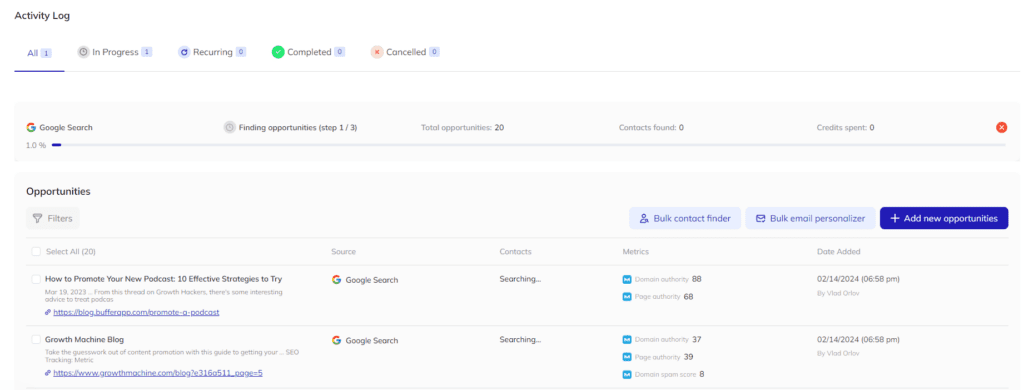
Respona will send you an email once it’s done (and it’s run entirely in the cloud), so you don’t have to sit there and wait for the automation to finish.
When ready, you can move on to the final step.
Review & Launch
Last but not least, before sending out your campaigns, we recommend reviewing the AI personalizations and making manual edits if your situation calls for it.
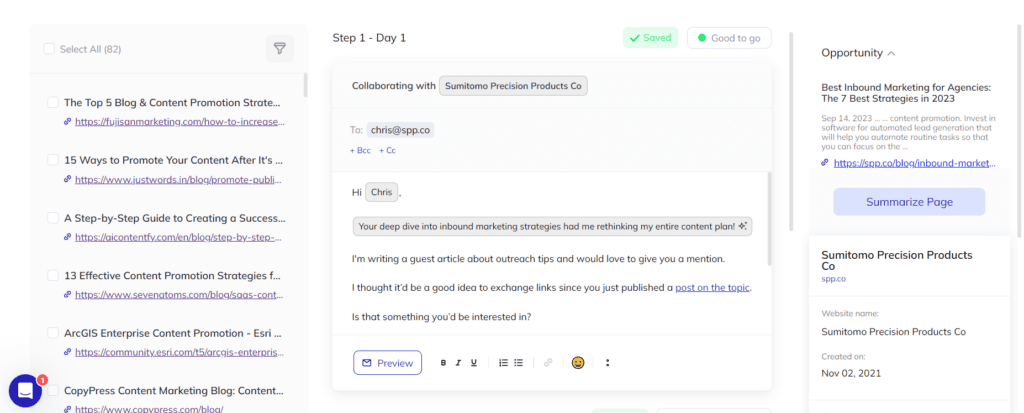
In addition to email addresses, Respona also finds your prospects’ LinkedIn profiles, so we recommend sending them a connection request on social media as well to increase your chances of success.
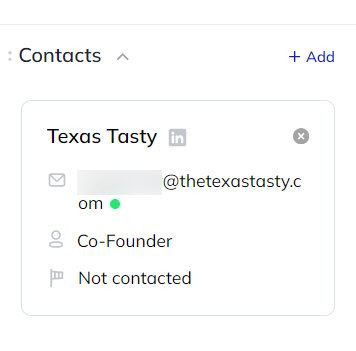
Once all emails are personalized, all that’s left for you to do is launch the campaign and wait for responses.
Link building cheat sheet
Now Over To You
So, to sum it up, link building for SaaS is especially important because:
- High competition in most SaaS niches means you need to gain some sort of edge
- Having a strong backlink profile will make it more difficult for your competitors to outrank you
- Despite being such a resource-intensive process, it is a long-term SEO strategy that ultimately leads to increased online visibility and authority within your niche
How do you build links for SaaS businesses?
The best way is to keep producing high-quality content and reaching out to other webmasters to promote it.
Running link building campaigns manually is a ton of work, so don’t hesitate to start your14-day free trial with Respona today.
FAQ
How long does it take to see results from link building?
Link building can take a long time, however, after building links to a particular page for a few weeks in a row, you can expect its rankings to increase.
Should I hire an agency to do link building for my SaaS?
Link building is a lot of work, and if you just don’t have the capacity to do it in-house, the next logical solution would be to hire a link building service agency. Wouldn’t it?
It has its pros and cons. Typically, link building and SEO services cost much more than hiring a freelancer from a different part of the world to build links for you remotely, full-time.
With agencies, you also don’t really have full control over your link building process, and they can sometimes employ gray or even black-hat link building strategies, which are essentially a waste of your money.
So, if you do ever decide to hire a link building agency, be very thorough with your screening – and regularly check in with your team to ensure full transparency.
Should I pay for links?
You should never pay for links as this is considered a black-hat strategy and goes directly against Google’s guidelines.
However, paid links can be used as part of paid promotions such as product reviews or sponsorships, as long as they are marked with the “rel=sponsored” tag.
Are Nofollow links useless?
Nofollow links don’t pass on any “link juice” – so they’re not very helpful for increasing rankings.
However, that does not mean that they are completely useless – a nofollow link from a highly authoritative website is much better than no link at all.
People can still click on them and find out about your website, so nofollow links still work just fine for spreading the word around your business.
Should I avoid reciprocal links?
Yes.
Reciprocal links (backlinks that were acquired as part of a two-way link exchange) are considered to be a “link scheme” by Google and go against the guidelines.
Such links are easily identified by the algorithm and completely de-valued by Google, meaning that you won’t get any actual SEO benefit from reciprocal links.







